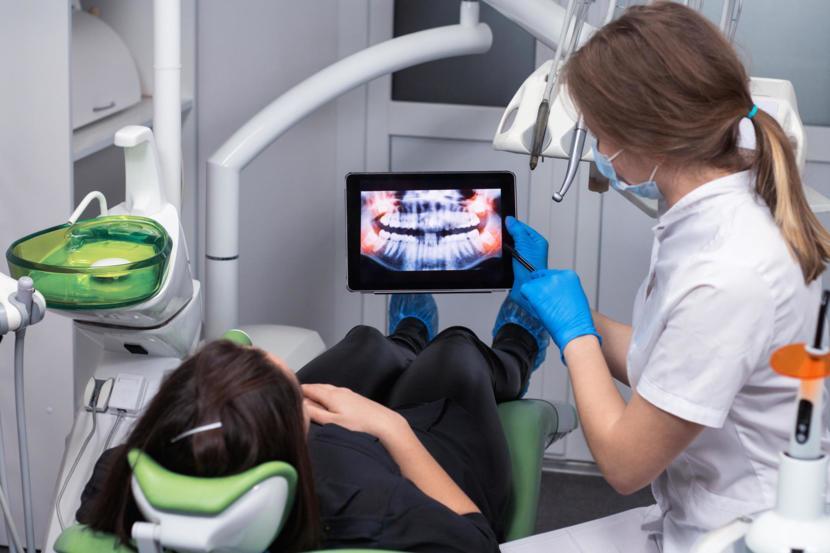Dentistry Makes Strides for Treatment of Sleep Apnea

Considered to be a serious sleep disorder, sleep apnea is affecting a great number of people. In a recent study conducted in the United States, it shows that almost 22 million Americans suffer from the sleep disorder.
The expertise of dentists is not only limited to diagnosing, treating, and prevention of oral diseases or with the promotion of good oral health, the role of a dentist can even be treating sleep disorders like obstructive sleep apnea.
Currently, due to the advancements in the field of medicine and dentistry, sleep apnea can now be treated. There are general dentists and dental-sleep medicine experts who are very much experienced in treating this particular sleep disorder as well as other breathing-related problems.
Typically, the diagnosis of sleep apnea is done by medical experts in an accredited sleep center. Though dentists cannot officially confirm a diagnosis of sleep apnea, they can help with initial screenings (especially if they have seen changes on their patient’s medical history such as an enlarged tongue, enlarged tonsils, and the like). For confirmatory tests and procedures, they should refer the patient to a physician.
If the condition has been confirmed, the dentist can apply behavior modification and the use of dental appliances. Dentists undergo special training for sleep apnea treatment. Since the sleep disorder can be a silent but deadly condition, some people with sleep apnea are undiagnosed.
There are two known types of sleep apnea and these are:
- Central sleep apnea: In this type of sleep apnea, there is no blockage in the airway. However, it is the brain that experiences difficulty in giving signals to the muscles, and this is due to an imbalance in the control center of the respiratory system.
- Obstructive sleep apnea: This one is known to be the more common type of sleep apnea. There is blockage of the airway in OSA. It happens during a person’s sleep when the soft tissue found at the back of the throat collapses.
How dentists can help treat sleep apnea: The oral device
The bones and the soft tissues around a person’s air passage can be remodeled in a non-surgical way. This can be done by asking the patient to wear a remodeling device at night, wear lightweight aligners during the day, and do therapy exercises that target the muscles in the face and mouth.
Training the tongue, the lips, and the facial muscles are indeed beneficial. The results of the treatment are seen to take effect faster in children, even in just a span of two weeks.
This form of treatment is also very effective, as long as both the patient and physician work together to fend off sleep apnea.
The troubling symptoms of sleep apnea: What are the associated risks if left untreated?
Snoring is the most common symptom of sleep apnea, but not everyone who snores has the disorder. One of the most prevailing symptoms of the disorder is snoring accompanied by pauses in breathing. Gasping or choking sounds can also be heard. More often than not, the person feels extreme fatigue or sleepiness even during the day.
When it comes to the risk factors, those who have excess body weight (overweight or obese people) are more likely to acquire sleep apnea. Should you notice that you have an unusually large neck, your risk for the disorder is significantly higher. It can mean that the soft tissues found in your neck may block your air passage as you sleep. Further, if any of your family members have it, you have high chances of inheriting sleep apnea.
With sleep apnea, a person’s breathing may be interrupted as he or she is sleeping. However, when this condition is left untreated, it can lead to stroke, atrial fibrillation, high blood pressure, chronic heart failure, and other cardiovascular problems. Persistent drowsiness, type 2 diabetes, and depression can also be associated with sleep apnea.
What is more alarming is that the sleep disorder can cause a person to frequently stop breathing while sleeping. So, the brain and the rest of the body may not get sufficient levels of oxygen.
Researchers have examined medical records and MRI brain scans of patients with sleep apnea, and they found out that there was thinning of the cerebral cortex. Also, there were distinct alterations in the structure of the brain. The cortical thinning was found out to be impairing the whole autonomic nervous system as well as the breathing of the patients.
Though there has been some developments in sleep apnea, there are still some hurdles
Understanding sleep apnea has become easy in the field of medicine and it has led to developing effective treatment options for patients. From the studies being conducted, cardiovascular risks and potential for heart failures have been revealed.
But, there are still several challenges like:
- Underdiagnosis of the disorder is still evident, which means that even with the availability of sleep laboratories, there are still lapses on improving the strategies needed.
- The treatment for sleep apnea is still not available in several countries.
- There is still no treatment for acute forms of sleep apnea.
Final thought: Treatments of sleep apnea are evolving
To overcome the disorder, both medical and dental practitioners, as well as all those in the health industry, must work hand-in-hand to be able to win against sleep apnea. There is now a growing research on this specific disorder, and this is to help all people suffering from sleep apnea to get treatment and live a healthier life.
Paying attention to your body, taking note of the changes, listening to what other people notice, as well as having regular check-ups are one of the many ways to prevent several serious medical complications. Sleep apnea has its treatment, and such has been proven to be effective. More so, the whole health industry would be joining their forces in response to the challenges they are currently facing with regard to this sleep disorder. Technological developments can aid the medical field in triumphing over sleep apnea.















